SVS Prime Bookshelf Review
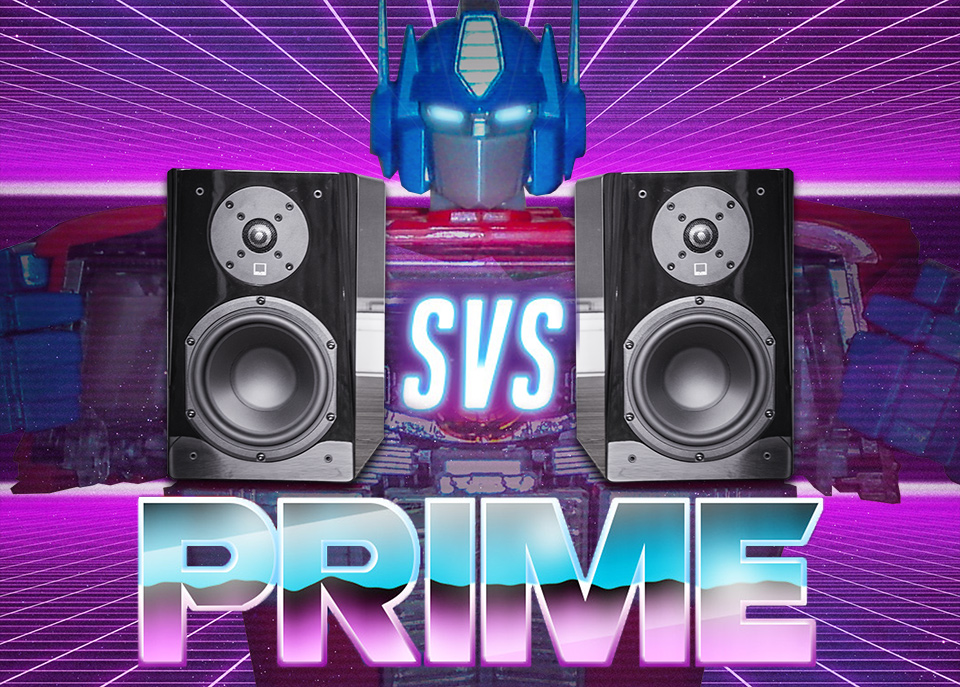
Transform and roll out!
Back before most speaker manufactures had measurement microphones they would put drivers in massive boxes with the sole intention of rocking your face off.
Some of the great speaker of my childhood include blasphemous audio deities like the Infinity SM155 and Cerwin Vega AT15.
These speaker were mid bass punchy, loud as hell and defined home theater dreams before surround sound was even in theaters.
Times have moved on, but I have not. I don't do home theater. My TV is not even hooked up to the speakers that surround it, and I would rather have subwoofers under the left and right channels than hidden in a corner.
Contrary to my luddite ways, SVS over the past decade or so made a name for themselves by shaking sheetrock with reasonably sized subwoofers, all in the name of home theater progress.
The SVS Prime Bookshelf is not from a pedigree of any kind -- it's one of four stereo speakers SVS has made.
In this price range which in my opinion is filled with lots of 'not good enough' the Prime has plenty of room to knock out the big guys. Let's see how it stacks up.
Component Overview:
Tweeter
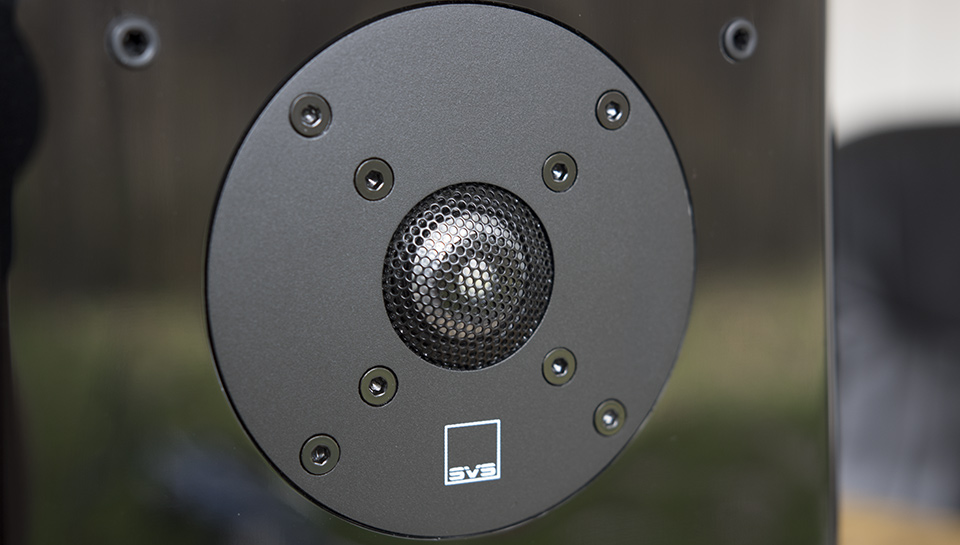
Tweeter is a 1 inch metal dome, I'm guessing it's aluminum. There is some type of doped accordion surround and a diffuser to spread the highest frequencies out.
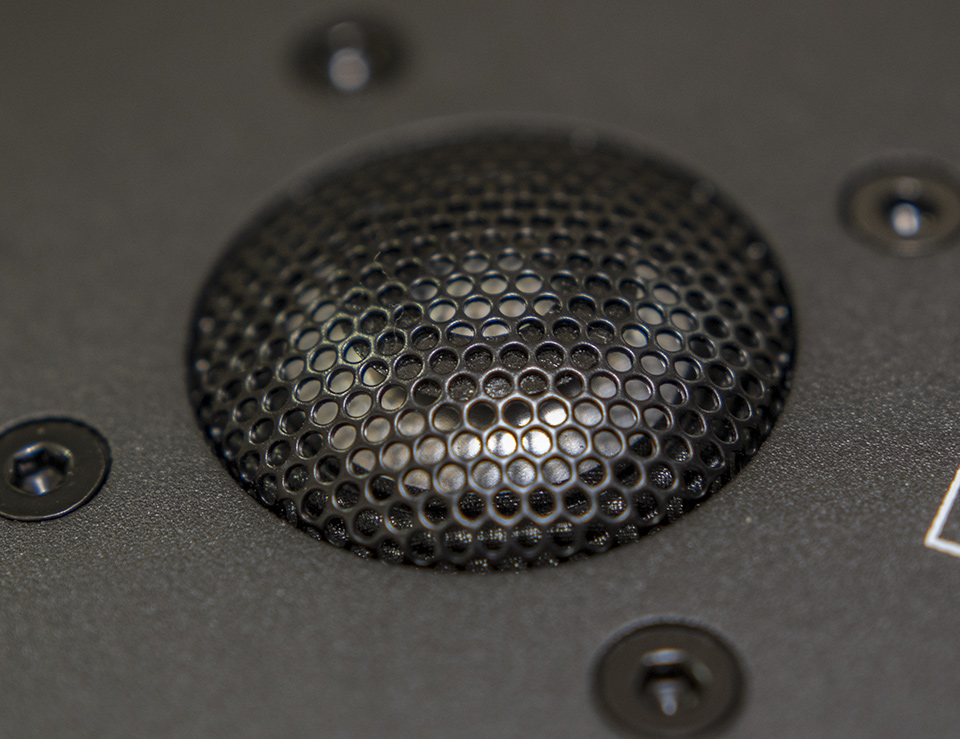
The metal grill is open and not too bad as far as tweeter grills go.
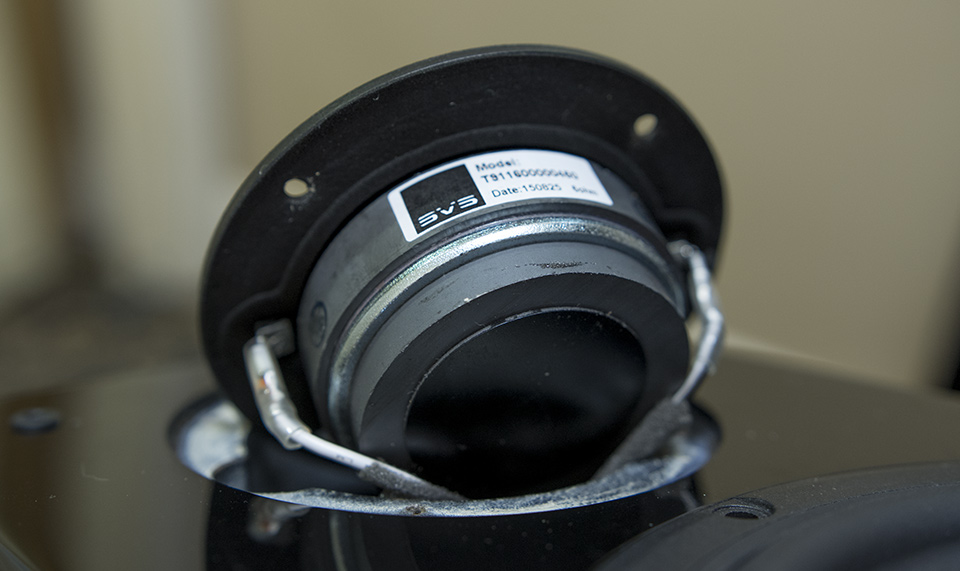
The bezel feels plastic, but I'm assured by the engineers at SVS that it's a cast aluminum piece. The tweeter has a pair of rear magnets, one to increase the efficiency of the driver and together they seem pretty hefty.
Woofer
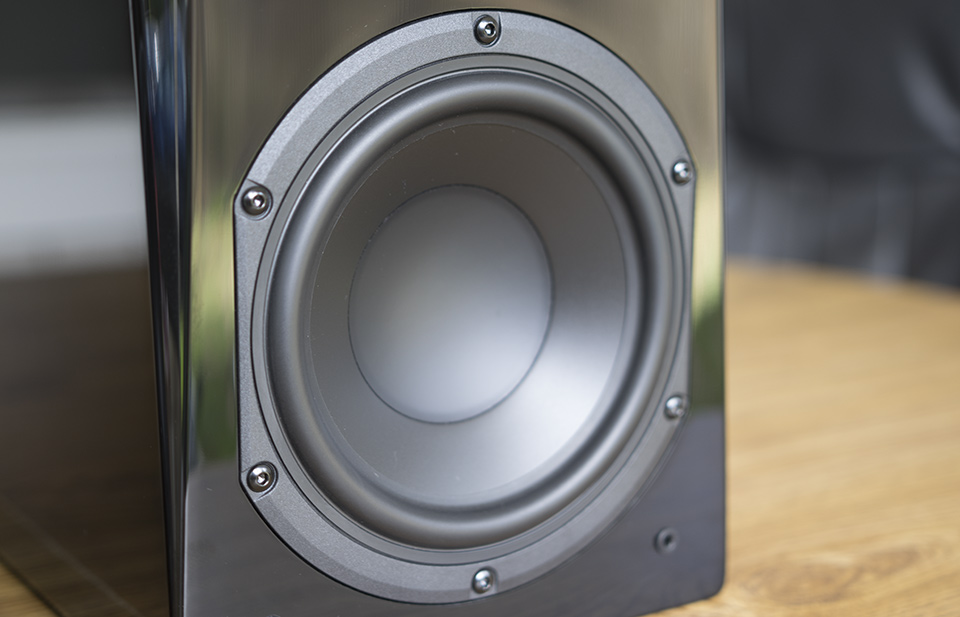
6.5 inch woofer in a truncated frame. This looks a lot like a Peerless driver, but it's probably an SVS in-house unit. Butyl rubber surround, poly woofer with yet again another inverted dust cap.
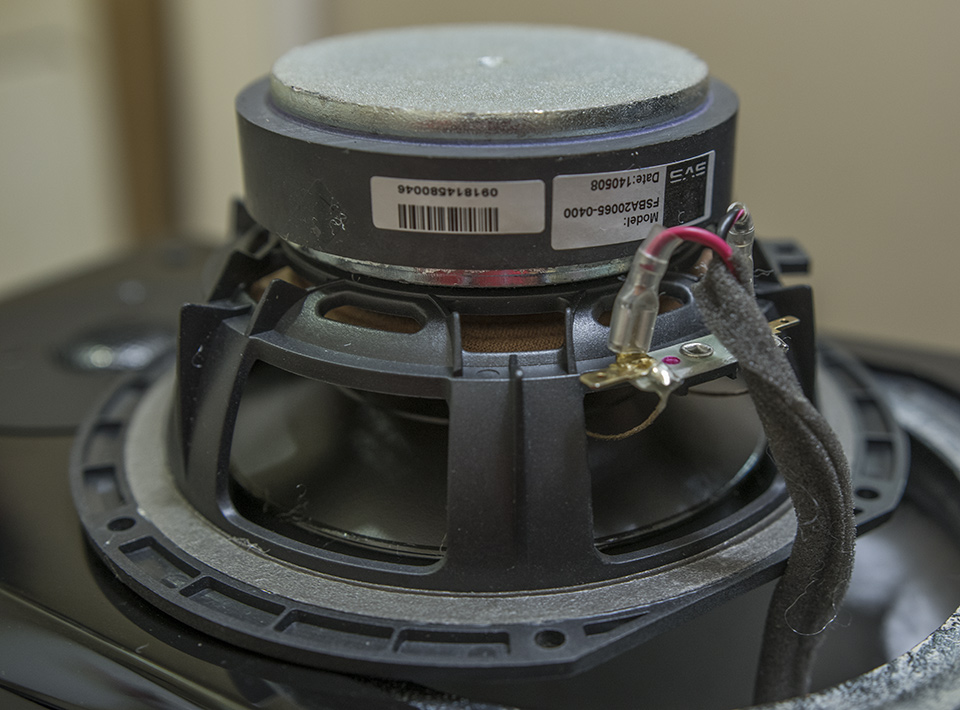
Woofer frame not only feels plastic, it is plastic. Specifically it's some type of tough nylon material. The spider is unusually close to the motor, not a lot of room for excursion. No vented pole piece, which should help keep the sounds in the box and not venting out of the dust cap, but it's not going to help with power handling.
Crossover
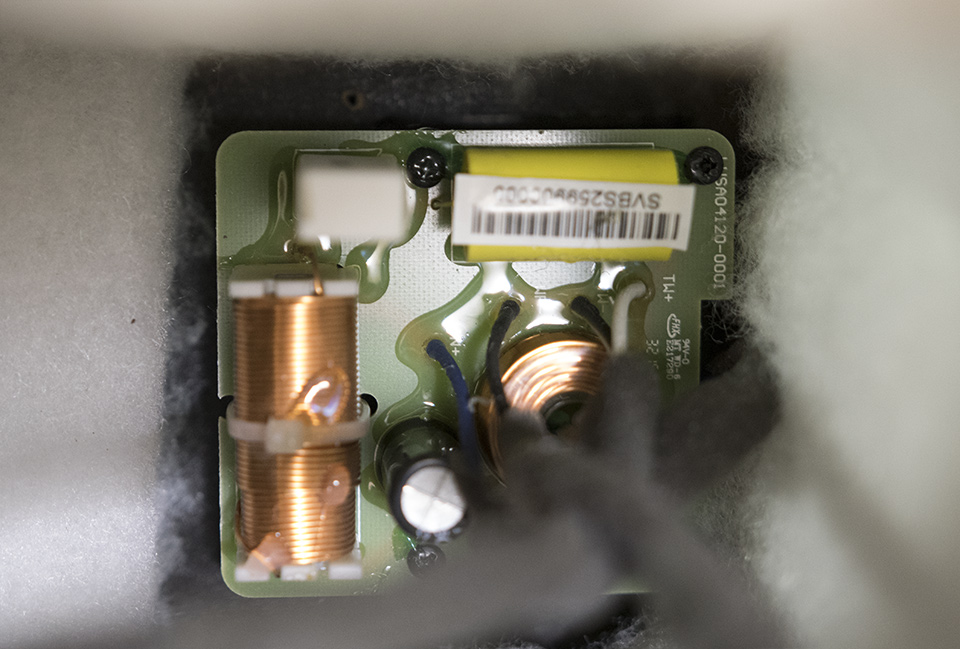
Crossover is not very impressive. Looks like 2 caps, 2 coils, and a small resistor. Add it all up and this is a 2nd order crossover with a level matching on the tweeter.
Cabinet
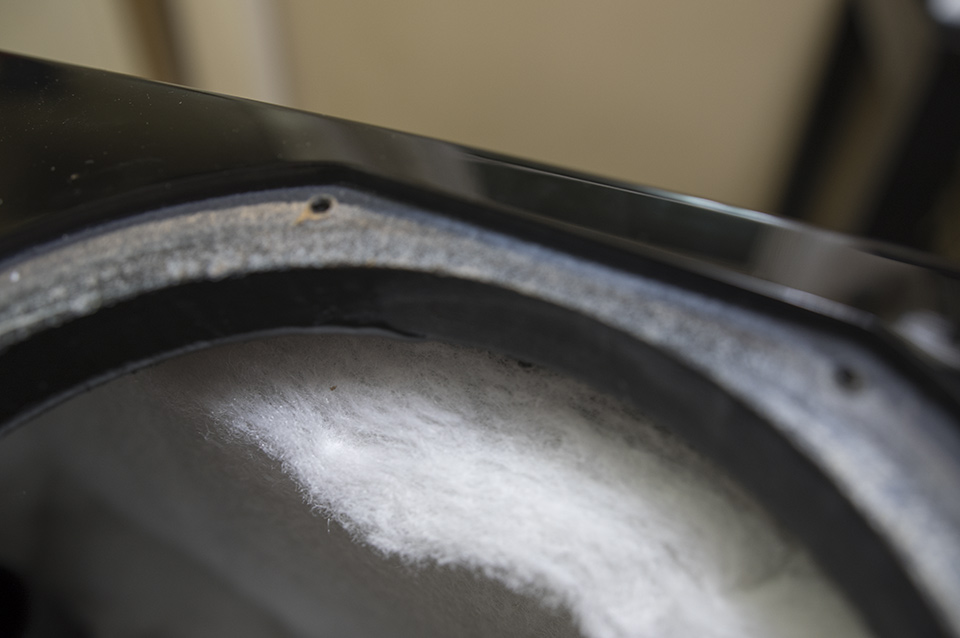
Cabinet is pretty nice, looking at some thick MDF that seems harder than normal. This could be from soaking up the gloss black epoxy type paint.
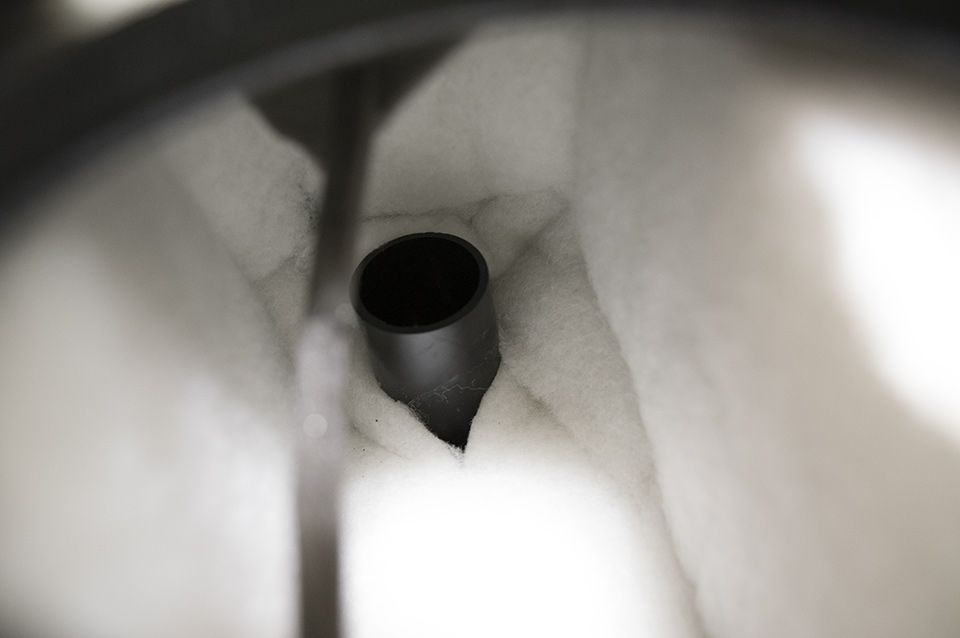
No braces in the box, just a bunch of poly blankets and a port tube.
Port
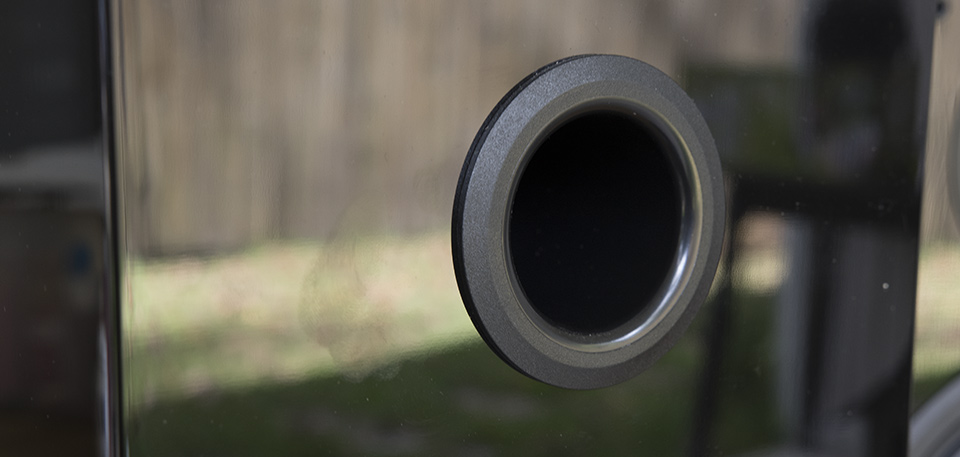
Port is an 1.75 x 4 inch tube. Construction seems solid, but won't be a very deep tuning given the size of the box.
Terminals
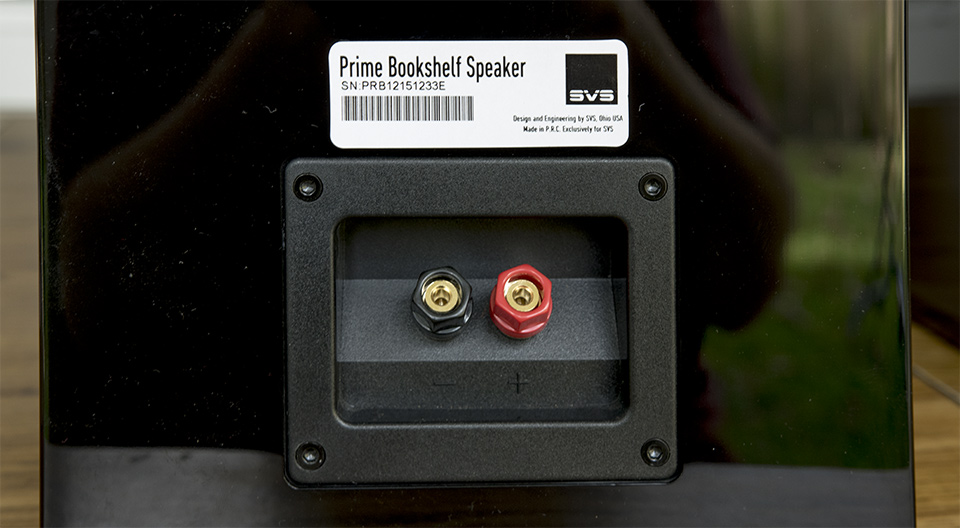
These are nicely spaced and hold the wires just fine.
Grills
There were grills, but I took them off and have not looked at them since I opened the box. They looked acceptable from what I can recall.
Desktop Listening Notes:

Time to get drunk and blast some tunes!
Sounds like too much treble sizzle. It's not a rising response, maybe just an elevated tweeter level.
I would have ditched the diffuser and put more resistor on the tweeter.
Some music sounds hollow, like the bass is missing or cabinet issues.
Imaging is forward, but very good with the speakers pointing straight ahead, no toe-in needed.
Speakers sound loud which is usually a bump in the most sensitive zone for hearing (4-6kHz).
Verified party speakers - I imagine once you add in a subwoofer you could scare the neighbors properly with a pair of these.
Metal sounds very good with these speakers.
House music fans will want to pick up a subwoofer to make the walls properly rattle. These things are loud, but don't play bass deeply.
Little SMSL SA-50 will power these to about 90dB without issue, and 100dB is crunchy, but is also very loud because of the tonal weighting being treble happy. Bigger amp does a better job, but it's still stupid loud.
Good speaker, still needs a subwoofer regardless of the spec sheet saying it plays deep. Metal dome tweeters are not my thing, they are just too sharp for my ears.
Living Room Listening Notes:
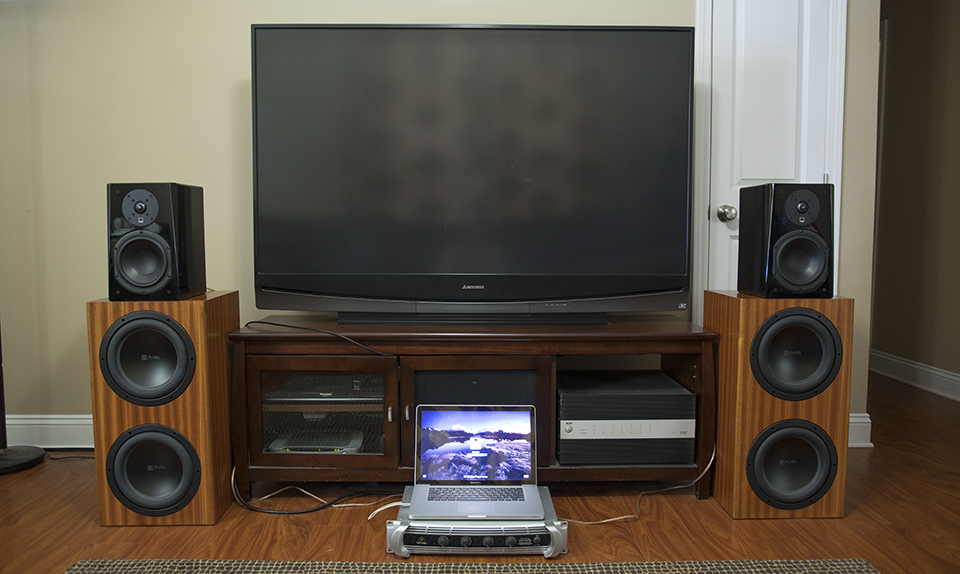
I can hear bass, but it is way behind the rest of the music.
Sounds like there is no baffle step in this speaker.
Treble detail is very good.
Male vocals have no body to them.
Imaging is good. Speakers do not disappear, but very nice center image.
Even at 83dB the sound coming from the speakers is quite loud. This is because bass is the majority of what an spl meter picks up, and these speakers are not putting out much.
I don't like these speakers in a stereo living room setup. They would probably be great in a home theater with auto correcting receiver and subwoofer.
Pushing up to 95dB on Burn the Witch and bass gets sloppy. Which makes everything sloppy. At this point they are pretty damn loud though.
Hit massive sub sonic on 2 Many Zoo, and woofer is about to pop its cork. Consider these completely broken in. Horns sound good loud and detailed.
I'm just airing them out now, loud Earth Wind and Fire gets shouty. They have had enough.
Measurements:
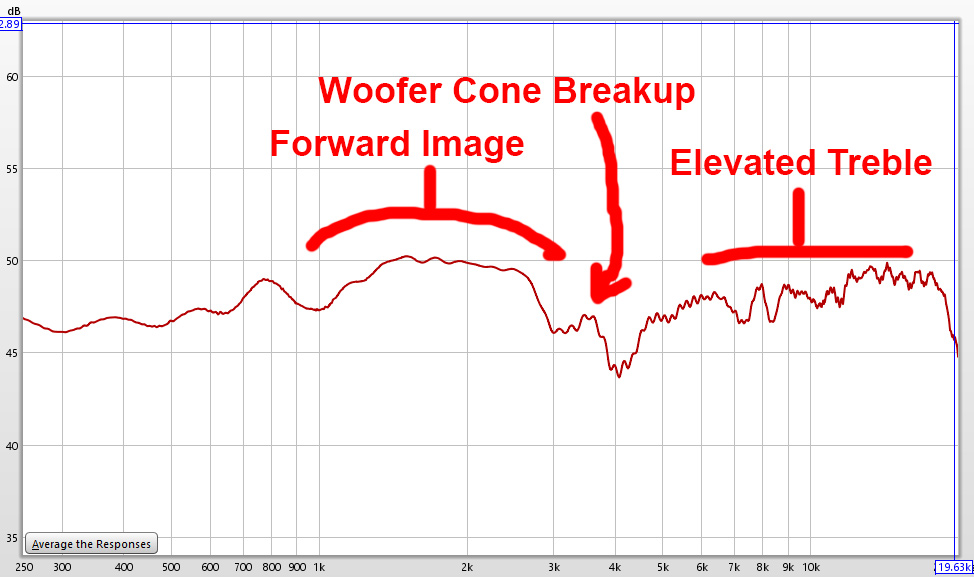
This is a on axis windowed unsmoothed response taken outdoors to avoid reflections. No Bass response in this measurement because I am getting floor bounce in my outdoor measurements, which cancels bass response when measured. The big hump around 2k is a pretty common problem with passive speakers. The mess around 4k is related to a little bit of cone breakup coupled with the crossover happening at the same time. Tweeter is just a hair higher than it should be above 8k.
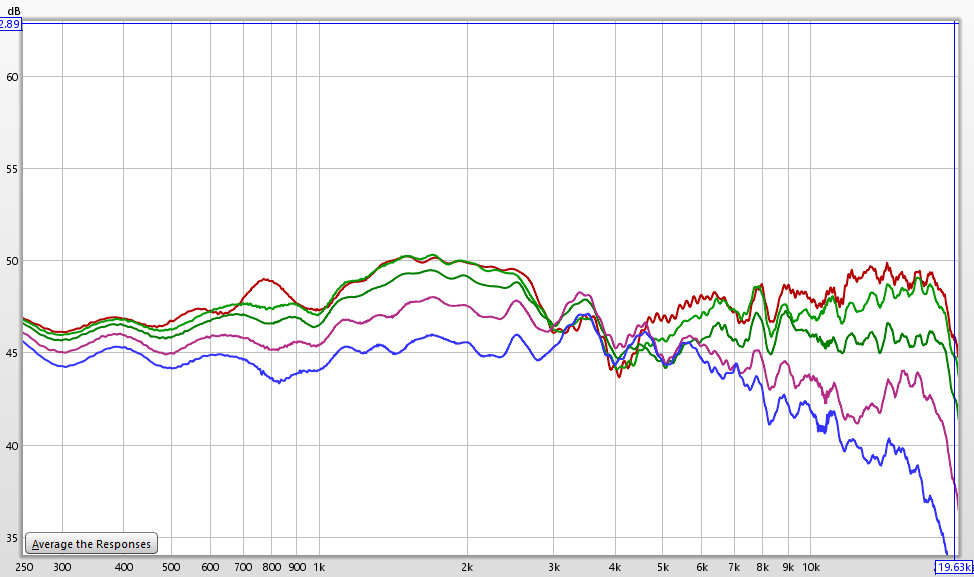
These measurements are 0-60 degree in 15 degree increments. windowed and unsmoothed. Off axis shows the 4k mess disrupts the directivity of the speakers. This could be from the tweeter design, or just driver spacing. It's not a big deal here, because the speakers are not horns I'm not expecting uniform roll off.
DSP Correction:
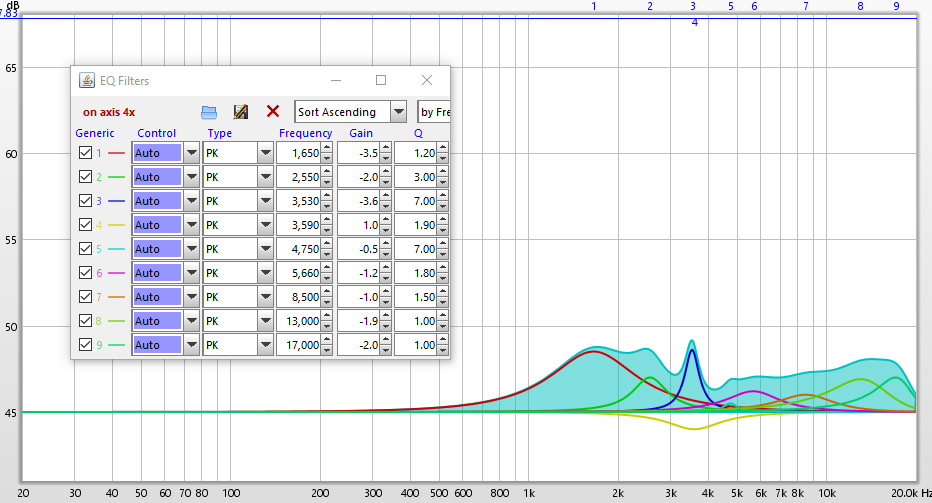
Took care of the little bit of cone breakup hanging around at 3.5kHz, turned down the tweeter a bit, and removed a hump in the lower treble that was causing the image to be tilted forward. I also adjusted the sound based on power response/tone to be more uniform taking into account the off axis behavior at 4kHz.
Lots of filters to get the job done, but it's damn near perfect to my ear.
Corrected Listening Impressions:
Bass is more evident now that the speaker is not screaming treble.
Imaging is pushed back behind the speakers, very nice and comfortable for desktop use.
Sounds considerably smoother than the uncorrected speaker.
102dB on songs with punchy bass is comfy like a smooth running engine with open headers sitting on your lap.
Bass still sounds a little hollow. You will still be missing deep bass for some music.
Treble is still very detailed and all but the smallest piece of sharpness has been removed.
Running through my music library and everything is coming up roses.
Very good sound with the only compromise being bass extension.
Final Thoughts:
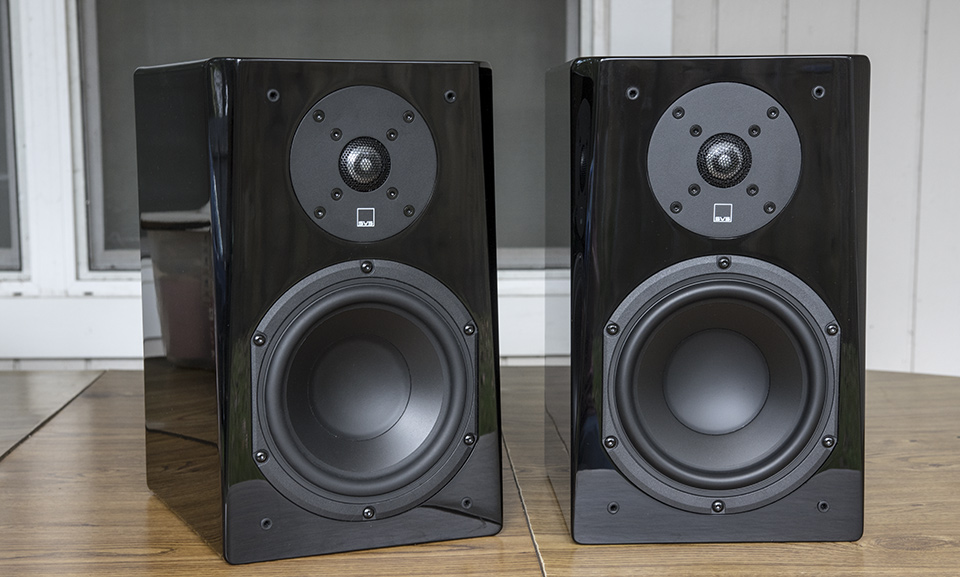
I don't like the tweeter, the speaker does not play low enough, and the driver construction, crossover, and cabinet are some of the least impressive technically I've reviewed in this price range.
All that said the SVS Prime Bookshelf sounds the best of the bunch.
To clarify, these speakers are not something I'm happy with, but they are better that the B&W's, KEF's and ELAC's.
They don't shit the bed when asked to play loud, they don't have the issues associated with first order crossovers, and keep the detailed low distortion sound of the better known brand speakers.
Elevated treble is something tone controls can fix for the most part, and if you have a fancy auto calibrating receiver with an SVS recommended subwoofer you will probably have something you can enjoy in a larger room.
For near field computer desktop use there are powered options that can do an amazing job, but the ones I have reviewed don't have the low distortion sound you get from higher quality drivers found in these passive speakers. Applying the DSP correction brings the maximum performance out of the SVS speakers, and with the correction I would be happy to have these speakers on my desk permanently.
I do think the price is too high for these considering the plastic woofer frame and lack of a brace, but at least they hide the cheapness well with a finger print and dust magnet gloss black exterior.
I'm going to keep digging in the $500 range for speakers, but as of right now these are the best all around passive bookshelf speakers I've reviewed.
Click here to get the DSP correction file for these speakers.
Click here to buy SVS Prime Bookshelf speakers or check out the system finder to see what I recommend.
Other content you may like:
- Vanatoo Transparent One Review - Software update brings new standard of performance!
- Lone Star Audio Fest 2018 - Staying up late, drinking too much, smoking like chimneys!
- Andrew Jones goes back the be begining, ELAC B5.2 Debut 2.0 Review is up!
- New Scores for all reviewed speakers - Compare and sort for fun!
- Creative Sound Solutions DIY Solution for the high end - CSS Criton 1TD v2 review is up!
- Dayton Makes a Budget Desktop speaker with a crossover - Dayton Audio MK402 review is up!
- Smaller than small, deeper than deep - iLoud Micro Monitor review is up!
- Vanatoo's new speaker, The Transparent Zero review is up!
- SVS Prime Bookshelf Review is now available for your viewing pleasure
- ELAC A-Stock UB5 Listening Impressions are up!
- 30 years in the making, the ancient Bose 901 finally gets measured - The Bose 901 review is up!
- Lock and load, we are hitting the bottom of the barrel with both barrels - The Logitech z313 review is up!
- Bulletproof speakers... No, it's just the B&W 686 S2 Review!
- Declare independence from the British sound! - The KEF Q300 review is up!
- Recommended System Finder - Just in time for the Holidays!
- JBL LSR308 Studio Montor - Super Massive Epic Review!
- Two years after starting this site I finally get around to talking about my stereo.
- Small and cheap speakers transform into retarded and good... Micca COVO-S Review!
- AMT tweeter on a B652? The Dayton B652-AIR is reviewed for great justice!
- JBL LSR305 Studio Monitor Review!
- Zu Essence Review!

